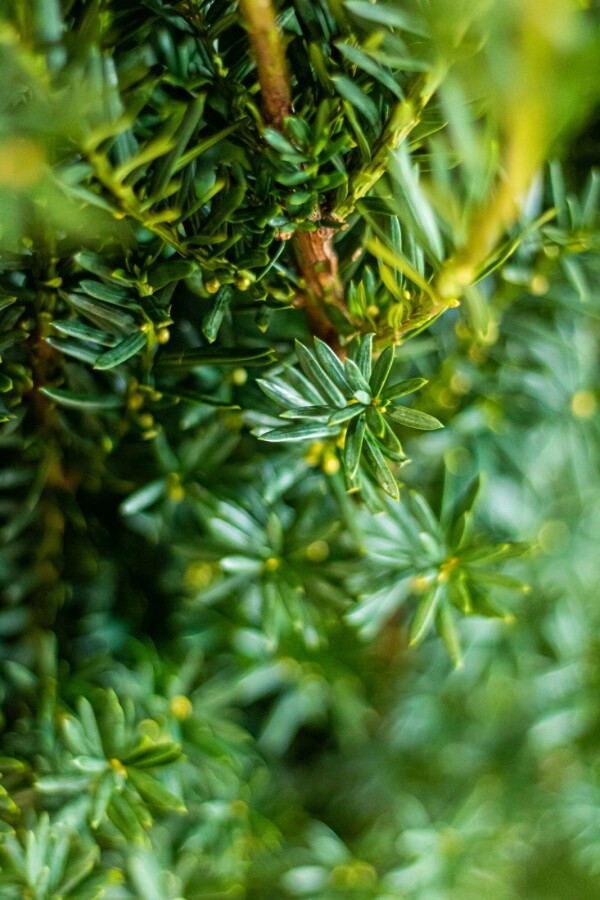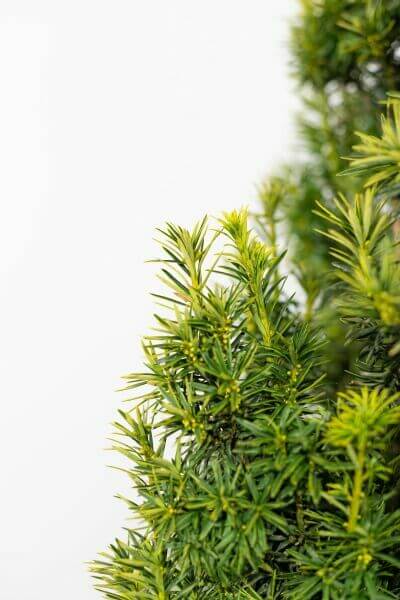Best Hedging Plants For Autumn Hedges
Boost your garden's allure with lavish hedge ranges such as Yew (Taxus), Thuja, Laurel, Photinia, and Bamboo, celebrated for their structural integrity and ecological benefits.
Yew and Thuja offer evergreen protection and winter strength, while Laurel offers fast development and broad, fragrant leaves.
Photinia adds seasonal beauty with its dynamic red foliage, and Bamboo provides a low-maintenance, serene atmosphere.
These hedges enhance air quality, reduce noise, and develop tranquil, personal spaces.
Appropriate planting, spacing, and upkeep guarantee energetic development and ecological harmony.
Check out how these rich ranges can elevate your garden's appeal and well-being.
Key Takeaways
Change Your Garden With Lush Hedge Varieties
- Select Yew for its thick, evergreen development and exceptional longevity.
- Select Laurel for its quick development and broad leaves, making sure quick personal privacy.
- Choose Photinia for its dynamic seasonal foliage, which turns a striking dark red.
- Make use of Bamboo for a low-maintenance, winter-hardy hedge with visual appeal.
- Space plants 2-3 per meter and prune regularly for optimal growth and health.
Popular Hedge Plants
When changing a garden with rich hedge ranges, it's important to think about popular hedge plants such as Yew, Thuja, Laurel, and Photinia due to their special qualities and advantages.
Yew (Taxus) is extremely respected for its durability and thick, green development, making it a prime option for sustaining landscapes.
Thuja is noted for its evergreen foliage and robust winter resilience.
Photinia adds seasonal vibrancy with red leaves that darken over time, creating vibrant visual appeal.
Laurel uses quick development and fragrant, broad leaves, suitable for quick privacy.
In Addition, Bamboo is an excellent option for atmosphere, using a low-maintenance, winter-hardy choice that improves the garden's aesthetic with its elegant, swaying walking canes.
These choices accommodate a variety of horticultural requirements and choices.
Advantages of Garden Hedges
Garden hedges provide a wide range of benefits, making them an important addition to any landscape. These natural barriers are economical to execute and provide substantial wind security, enhancing air blood circulation and adding to noise decrease. The thick foliage of hedges like Thuja and Beech ensures personal privacy by obstructing visibility, developing a remote and serene environment.
Hedges likewise play a crucial function in microclimate regulation, supplying a stable environment that cultivates plant growth and decreases temperature variations. Their complex leaf structures filter pollutants, enhancing air quality and adding to a healthier garden community.
Moreover, hedges excel in sound reduction, soaking up and deflecting sound waves to lower ambient noise levels. This double functionality of offering both visual and acoustic privacy boosts the overall serenity and visual appeal of any garden.
Planting and Maintenance Tips
For an effective hedge, careful preparation of the planting location is crucial. Guarantee the soil has correct pH and drainage to support strong root development.
Area the plants appropriately for the chosen species. Water the hedge regularly throughout its initial development stage, adjusting as needed with seasonal modifications.
Carry out a systematic pest control and disease avoidance method, utilizing chemical or organic treatments when necessary. Routinely examine for aphids, termites, and fungal infections.
Apply mulch to maintain moisture and suppress weeds. Seasonal pruning promotes dense growth and air flow, important for plant health.
Following these standards will assist you cultivate a vibrant, well-kept hedge that improves the charm of your garden.
Spacing and Cutting Standards
Spacing and Cutting Standards
Appropriate spacing and cutting are important for cultivating healthy, aesthetically appealing hedges. Appropriate spacing makes sure each plant gets enough nutrients, light, and air flow.
Follow these standards for optimum hedge upkeep:
- Spacing: Position hedge plants 2-3 plants per meter to motivate robust growth.
- Pruning Strategies: Routine pruning is necessary for keeping wanted hedge height and shape. Cut brand-new growth in summertime and cut back older wood during winter season.
- Seasonal Care: Change cutting methods and schedules according to seasonal requirements to ensure plant health.
- Hedge Height: Frequently screen and trim to maintain the wanted hedge height and attain consistent visual appeals.
Complying with these actions will ensure your hedge flourishes, enhancing both the appeal and performance of your garden.
Selecting the Right Hedge
Choosing the Right Hedge
Picking the suitable hedge involves examining factors such as mature height, foliage density, and ecological durability. Successful hedge plant choice needs understanding each types' growth attributes and site-specific versatility.
For instance, Yew (Taxus) offers excellent durability and dense development, while Thuja is notable for its winter season durability. In addition, considering upkeep requirements is essential; fast-growing types like Laurel or Privet demand routine trimming, whereas low-maintenance alternatives like Bamboo or Ivy might be preferable for those looking for minimal upkeep.
Ecological factors such as soil type, light schedule, and moisture conditions must likewise assist the selection procedure. This careful method makes sure the chosen hedges will prosper, providing both aesthetic and practical benefits to the garden landscape.
Delivery and Planting Suggestions
To ensure your hedge plants prosper, they need to be delivered by specialized couriers and planted immediately upon arrival.
Follow these essential steps for successful planting:
- Soil Preparation: Enhance the soil with natural matter to improve drain and nutrient material.
- Planting Depth: Create a trench twice the width and equal to the depth of the root ball.
- Watering Methods: Water completely after planting, keeping the soil regularly moist but not saturated.
- Mulching: Apply a layer of mulch to keep wetness and suppress weeds.
Consumer Support and Service
Provided the vital role of timely help in horticultural pursuits, our customer support group is available six days a week through telephone, e-mail, and social media to offer professional suggestions and swiftly address any concerns. Their dedication to quick response times guarantees client fulfillment by solving questions connected to plant health, optimum planting approaches, and upkeep schedules.

Within 48 hours
Within 24 hours
This thorough support group, strengthened by a stellar 9.3/ 10 client ranking, highlights our dedication to enhancing the gardening experience for every client.
Often Asked Questions
For How Long Does It Take for Hedge Plants to Establish?
Hedge plants normally need one to 3 years to become totally developed, with the exact duration varying by species and growing conditions.
Effective care throughout this critical duration is necessary for robust growth. Consistent watering, watchful weed control, and suitable fertilizer application are critical in promoting strong root development.
For example, fast-growing types like Laurel might develop faster, while slower-growing varieties such as Yew may take longer. Thorough upkeep speeds up the establishment process, leading to thick and healthy hedges.
What Are the very best Hedge Plants for Privacy?
The concern of the very best hedge plants for privacy involves examining evergreen and deciduous alternatives.
Evergreen hedges like Thuja, Laurel, and Cypress offer year-round coverage, ensuring constant personal privacy.
On the other hand, deciduous hedges such as Beech provide seasonal privacy, shedding leaves in cooler months.
Secret upkeep ideas for privacy hedges include regular trimming, fertilizing in spring, and proper spacing-- generally 2 to 3 plants per meter.
Additionally, constant watering and thorough weed elimination are crucial for promoting healthy, thick growth.
Can Hedge Plants Attract Wildlife to My Garden?
Yes, hedge plants can bring in wildlife to your garden by providing vital advantages like shelter, food, and nesting sites, consequently boosting regional biodiversity. Yew, holly, and laurel are outstanding for bring in birds, while ivy supports a variety of bugs.
Nevertheless, it's essential to keep in mind that there are some drawbacks, such as increased maintenance to handle bugs and regular upkeep. Thoroughly picking and maintaining hedge varieties can help stabilize these drawbacks and benefits, ultimately promoting a lively and sustainable community in your garden.
Exist Any Blooming Hedge Plants Available?
Yes, there are flowering hedge plants offered that can improve the charm of your garden.
For instance, Elaeagnus, likewise called Olive Willow, produces aromatic white flowers in the fall, including a touch of sophistication.
Photinia, another popular option, showcases lively red leaves that grow into an abundant green, creating a dynamic visual result throughout the seasons.
To ensure these plants thrive, it's important to practice proper pruning techniques and seasonal maintenance, such as trimming brand-new development in the summer season and cutting back in the winter season.
These procedures will assist preserve the health and visual appeal of your flowering hedges.
How Do I Prevent Pests in My Hedge Plants?
To prevent bugs in hedge plants, use natural bug control approaches and preserve appropriate hedge care. Introduce advantageous insects like ladybugs, which victimize damaging bugs, to produce a balanced environment.
Frequently examine your hedges for indications of problem and without delay get rid of any afflicted parts to prevent the spread. Ensure the health of your hedges by using balanced fertilizers and providing appropriate water.
Use mulching to retain soil wetness and appropriate spacing to lower plant tension and promote robust growth. These practices jointly help in reducing bug issues and keeping a healthy hedge.
Conclusion
In essence, selecting the right hedge ranges such as Yew, Thuja, and Laurel can transform any garden into a serene sanctuary. These plants provide year-round plant, enhance visual appeal, and offer useful advantages like noise decrease and wind defense.
Appropriate planting strategies, precise spacing, consistent watering, and seasonal trimming are essential for ideal growth.
Dependable delivery services and professional client support guarantee a smooth experience from purchase to planting, making it simpler than ever to raise your outdoor area.
Garden hedges use a wide variety of benefits, making them a valuable addition to any landscape. These natural barriers are cost-efficient to implement and offer significant wind security, boosting air check here circulation and contributing to noise reduction. The thick foliage of hedges like Thuja and Beech makes sure privacy by blocking presence, developing a serene and secluded environment.

Pruning Techniques: Routine pruning is vital for maintaining wanted hedge height and shape. Cut new development in summer and cut back older wood throughout winter.